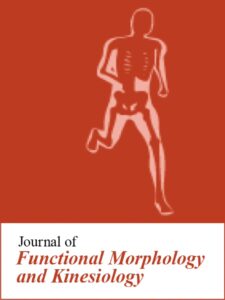Publications

Foam Rolling or Percussive Massage for Muscle Recovery: Insights into Delayed-Onset Muscle Soreness (DOMS)
Authors: Sebastian Szajkowski 1, Jaroslaw Pasek 2, Grzegorz Cieslar 3
Affiliations:
- Faculty of Medical Sciences, Warsaw Medical Academy of Applied Sciences, 8 Rydygiera St., 01-793 Warszawa, Poland
- Collegium Medicum, Jan Długosz University in Czestochowa, 13/15 Armii Krajowej St., 42-200 Czestochowa, Poland
- Department of Internal Medicine, Angiology and Physical Medicine, Faculty of Medical Sciences in Zabrze, Medical University of Silesia in Katowice, 15 Stefana Batorego St., 41-902 Bytom, Poland
Journal: Journal of Functional Morphology and Kinesiology - June 2025, Volume 10, Issue 3, Article no. 249 (DOI: 10.3390/jfmk10030249)
-
Field & Applications:
- Sport
- Treatment evaluation
- Fatigue / Overtraining
- Warm-up / Recovery
Background: Pain manifestations as well as increased muscle tone and stiffness noted in the course of delayed-onset muscle soreness (DOMS) are reflected in altered values of the biomechanical and visco-elastic parameters of muscles. This study aimed to compare the effects of soft tissue mobilization with foam rolling and percussive massage on symptoms of DOMS induced by a standardized muscle fatigue protocol.
Methods: Healthy volunteers (n = 60) were divided into three groups: FR group – foam rolling (n = 20), PM group – percussive massage (n = 20) and CON group – control/passive rest (n = 20). The fatigue protocol for the gastrocnemius muscle was carried out for development of DOMS in subsequent days. Therapeutic procedures were applied to participants for 3 consecutive days. The results of therapy were assessed by means of myotonometry, performed five times (before, three times during the treatment procedure, and after the end of the procedure).
Results: Foam rolling significantly reduced the onset and duration of increased muscle tone (p = 0.006) and stiffness (p < 0.001), unlike percussive massage. The control group exhibited higher tone and stiffness after 48 h, at the peak of DOMS-related pain symptoms. Only foam rolling improved elasticity (decrement, p < 0.001), while visco-elastic properties (relaxation, creep) varied inversely with tone and stiffness. Foam rolling led to significantly lower stiffness (day 2) and reduced decrement and relaxation (day 4) compared to the control. Neither therapy was more effective than passive rest for pain relief during the observation period.
Conclusions: Foam rolling and percussive massage accelerate recovery of muscle tone, stiffness, and elasticity after DOMS as compared to passive rest but offer no added benefit for pain relief.
Keywords: delayed-onset muscle soreness, percussive massage, foam roller, stiffness,
Foam rolling and percussive massage have proven to be effective in restoring the correct biomechanical and visco-elastic parameters of muscles, which are subject to changes in the course of DOMS. They reduce the time over which tone and stiffness increase and elasticity is reduced and cause faster normalization of those parameters in comparison with passive rest. Foam rolling has proven more effective in this respect. Foam rolling and percussive massage, however, are not more efficient in alleviating the pain experienced in comparison with passive rest.


